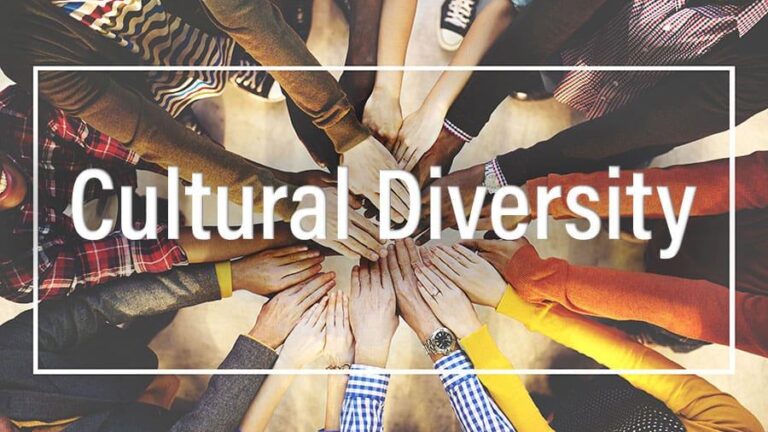
Exploring Cultural Diversity, Fostering Inclusion, and Celebrating Differences
In the vibrant tapestry of humanity, cultural diversity stands as a testament to the richness, complexity, and beauty of the human experience. From language and customs to beliefs and traditions, each culture contributes its unique colors and patterns to the mosaic of global society, enriching our collective heritage and shaping our shared identity. Yet, amidst the kaleidoscope of cultural diversity, there exists a profound imperative—to celebrate differences, promote inclusion, and cultivate a more equitable and harmonious world. In this article, we embark on a journey to explore the transformative power of cultural diversity, uncovering its myriad dimensions and advocating for a more inclusive and pluralistic society.
Understanding Cultural Diversity
Cultural diversity encompasses the vast array of human cultures, encompassing differences in ethnicity, race, nationality, religion, language, customs, traditions, and values. It reflects the unique identities, perspectives, and experiences of individuals and communities across the globe, and it is shaped by historical, geographical, social, and political factors. Cultural diversity is not only a source of enrichment and vitality but also a cornerstone of human rights, social justice, and sustainable development.
The Benefits of Cultural Diversity
Cultural diversity brings a host of benefits to individuals, communities, and societies, fostering innovation, creativity, and resilience. Some of the key benefits include
Cultural Exchange and Understanding
Exposure to diverse cultures broadens our horizons, deepens our understanding of the world, and fosters empathy and compassion for others. Cultural exchange promotes mutual respect, tolerance, and appreciation for different perspectives, breaking down stereotypes and prejudices.
Innovation and Creativity
Cultural diversity fuels innovation and creativity by bringing together diverse perspectives, knowledge, and experiences. When people from different cultural backgrounds collaborate and exchange ideas, they bring unique insights and approaches to problem-solving, leading to breakthroughs and advancements in various fields.
Economic Growth and Prosperity
Cultural diversity drives economic growth and prosperity by fostering entrepreneurship, trade, and tourism. Diverse societies are more resilient and adaptable to change, attracting investment, talent, and resources from around the world. Cultural industries such as art, music, cuisine, and fashion contribute to local economies and global markets, generating revenue and creating jobs.
Social Cohesion and Harmony
Embracing cultural diversity strengthens social cohesion and harmony by promoting inclusivity, belonging, and shared values. Inclusive societies are more resilient to social tensions and conflicts, as they celebrate diversity as a source of strength rather than division. By building bridges across cultural divides, diverse communities can forge bonds of solidarity and cooperation.
Challenges and Opportunities
Despite its many benefits, cultural diversity also presents challenges and complexities, including
Cultural Conflict and Misunderstanding
Cultural diversity can lead to tensions, conflicts, and misunderstandings, particularly in contexts where cultural differences are perceived as threats to social cohesion or national identity. Stereotypes, prejudice, and discrimination based on cultural differences can exacerbate social divisions and undermine harmony.
Marginalization and Exclusion
Marginalized groups and communities, such as indigenous peoples, ethnic minorities, and migrants, often face discrimination, inequality, and social exclusion due to their cultural backgrounds. Structural barriers, systemic racism, and unequal access to resources and opportunities perpetuate cycles of poverty and marginalization.
Cultural Appropriation and Exploitation
The commodification and appropriation of cultural symbols, practices, and artifacts can lead to cultural exploitation and erasure, particularly when done without respect for the originating culture’s traditions and values. Cultural appropriation perpetuates power imbalances and reinforces stereotypes, undermining the integrity and authenticity of cultural heritage.
Assimilation and Homogenization
The pressure to assimilate to dominant cultural norms and values can erode cultural diversity and contribute to cultural homogenization. Assimilation policies and practices marginalize diverse cultural expressions and identities, threatening the survival of indigenous languages, traditions, and knowledge systems.
Promoting Inclusion and Celebrating Differences
Fostering inclusion and celebrating differences are essential steps towards building more equitable, resilient, and harmonious societies. Here are some strategies for promoting inclusion and celebrating cultural diversity
Education and Awareness
Promote cultural literacy and intercultural competence through education, awareness-raising, and cross-cultural training. Encourage schools, universities, and workplaces to incorporate multicultural perspectives into their curricula and programs, fostering understanding and appreciation for diverse cultures.
Community Engagement and Dialogue
Create opportunities for dialogue, collaboration, and mutual learning among diverse cultural groups. Support community-based initiatives, cultural festivals, and intercultural exchange programs that bring people together to celebrate their shared humanity and cultural heritage.
Policy and Advocacy
Advocate for policies and legislation that promote equality, diversity, and inclusion in all spheres of society. Support initiatives that address systemic barriers to cultural diversity, such as discrimination, racism, xenophobia, and social exclusion.
Cultural Preservation and Revitalization
Protect and preserve indigenous cultures, languages, and traditions through cultural heritage conservation efforts, language revitalization programs, and community-led initiatives. Recognize and respect indigenous rights to land, resources, and self-determination, and support indigenous-led conservation and sustainable development initiatives.
Empowerment and Representation
Empower marginalized communities and amplify their voices and perspectives in decision-making processes and public discourse. Ensure equitable representation and participation of diverse cultural groups in political, economic, and social institutions, promoting social justice and democratic governance.
Conclusion
Cultural diversity is a cornerstone of human civilization—a testament to the resilience, creativity, and adaptability of the human spirit. By embracing diversity, promoting inclusion, and celebrating differences, we can build more equitable, resilient, and harmonious societies that honor and respect the dignity and rights of all individuals and communities. As we navigate the complexities and challenges of an increasingly interconnected world, may we cherish the richness of our cultural heritage, cultivate empathy and understanding for others, and forge a path towards a more inclusive and sustainable future for generations to come.



